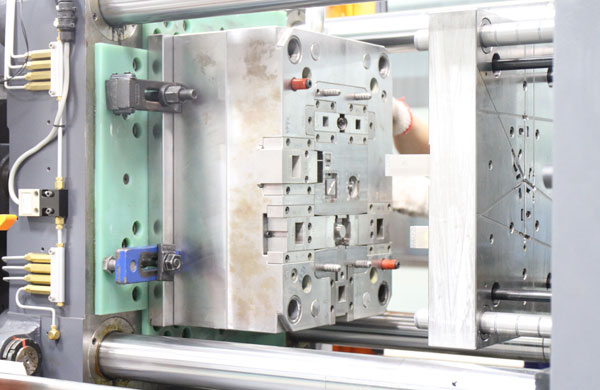In the field of overmolding injection process, the issue of TPE sticking to molds is undoubtedly a major bottleneck that restricts production efficiency and product quality. To effectively tackle this problem, this article provides a comprehensive and detailed improvement plan from multiple dimensions, including mold design, molding process, material selection, mold maintenance, and more.
I. Mold Design Optimization
First and foremost, starting from mold design, we can try the following strategies:
Differentiated Surface Treatment: Design the male mold with a smooth surface, while the female mold undergoes sandblasting or texturing. This change can effectively reduce the contact area between TPE and the mold surface, thereby lowering the adhesion force and making the demolding process smoother.
Adjustment of Draft Angles: By reducing the draft angle of the male mold or eliminating it, we can guide the soft rubber to prefer staying on the male mold, reducing adhesion on the female mold.
Upgrade of Venting Structure: Optimize the venting structure design of the mold to ensure that gases in the mold cavity can be quickly and smoothly discharged. This helps to reduce the gas pressure in the mold cavity, creating favorable conditions for soft rubber demolding.
II. Molding Process Adjustment
In terms of the molding process, we also have several adjustment measures:
Utilization of Temperature Difference Effect: By adjusting the mold temperature, such as applying low temperature treatment to the male mold and high temperature treatment to the female mold, we can utilize the temperature difference effect to reduce the adhesion of soft rubber.
Optimization of Molding Parameters: Appropriately lowering the molding temperature and holding pressure can reduce the fluidity and pressure of TPE, thereby lowering the likelihood of it adhering to the mold.

III. Material Selection and Optimization
Material selection and optimization are also key to solving the problem of TPE sticking to molds:
Adjustment of Material Formula: Choose suitable TPE materials and improve their fluidity and demolding performance by adjusting the material formula system, fundamentally reducing the occurrence of mold sticking phenomena.
Selection of Release Agents: Try using release agents with better compatibility with TPE, which not only reduce their impact on the appearance of the product but also ensure good demolding effects.
IV. Mold Maintenance and Cleaning
Mold maintenance and cleaning are equally important:
Cleaning Before Injection: Ensure the cleanliness of the mold before injection to avoid impurities such as oil and dust affecting the contact between TPE and the mold, thereby reducing adhesion.
Regular Maintenance: Regularly inspect and maintain the mold, clean the residues and impurities on the mold, and keep the mold surface smooth and clean, providing a strong guarantee for smooth demolding.
V. Other Key Considerations
In addition, there are some other details worthy of attention:
Control of Injection Speed and Pressure: During the overmolding injection process, strictly control the injection speed and pressure to avoid excessive flow and adhesion of the soft rubber due to too fast injection speed and too high pressure.
Consideration in Dual-Color Mold Design: When designing dual-color molds, fully consider the compatibility and fluidity of the two plastic materials to ensure smooth separation and demolding during the injection process, avoiding the occurrence of mold sticking issues.
In summary, through mold design optimization, molding process adjustment, material selection and optimization, mold maintenance and cleaning, as well as control of other key considerations, we can effectively improve the problem of TPE sticking to molds in the overmolding injection process. We hope this article can provide you with useful references and inspirations.